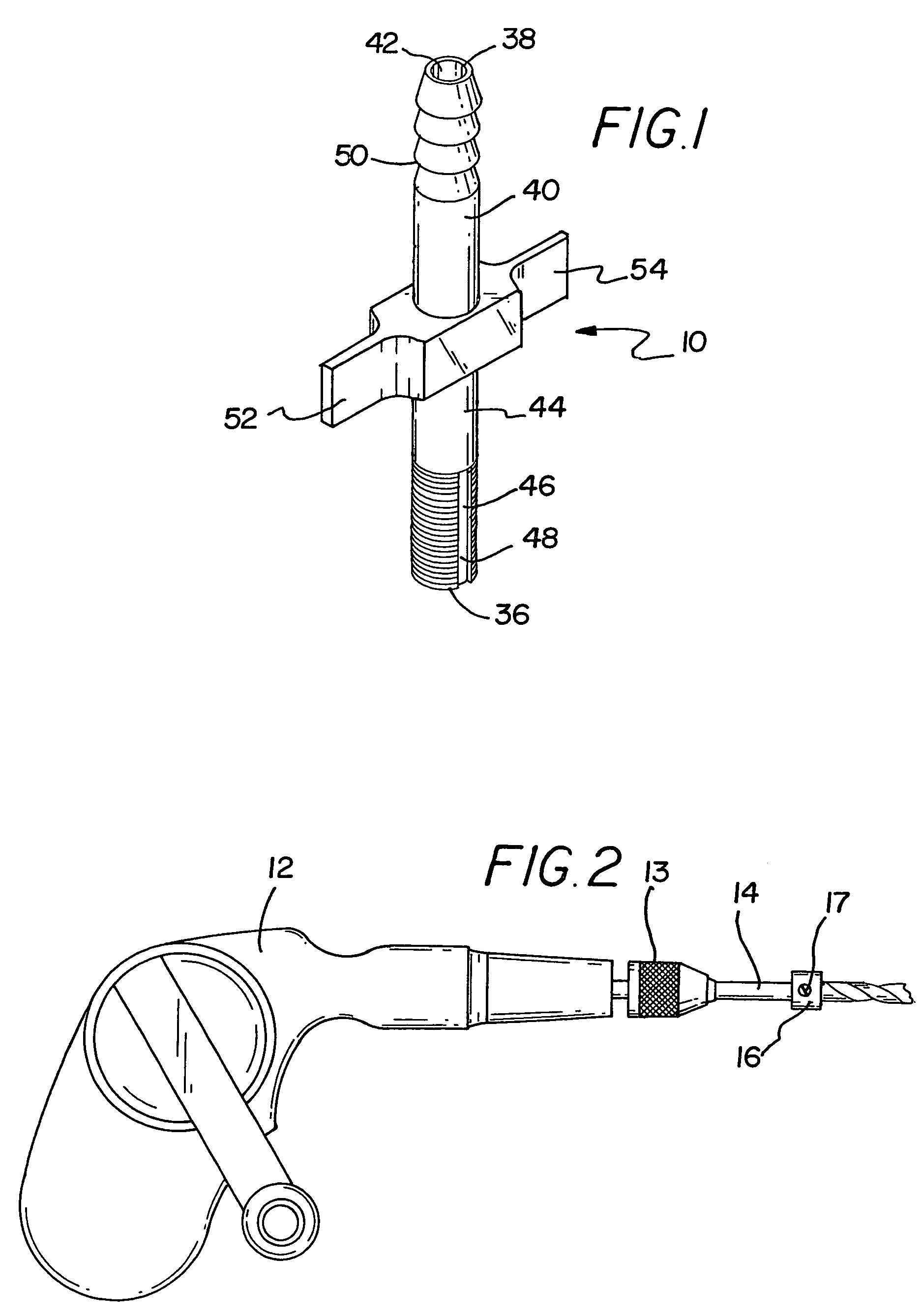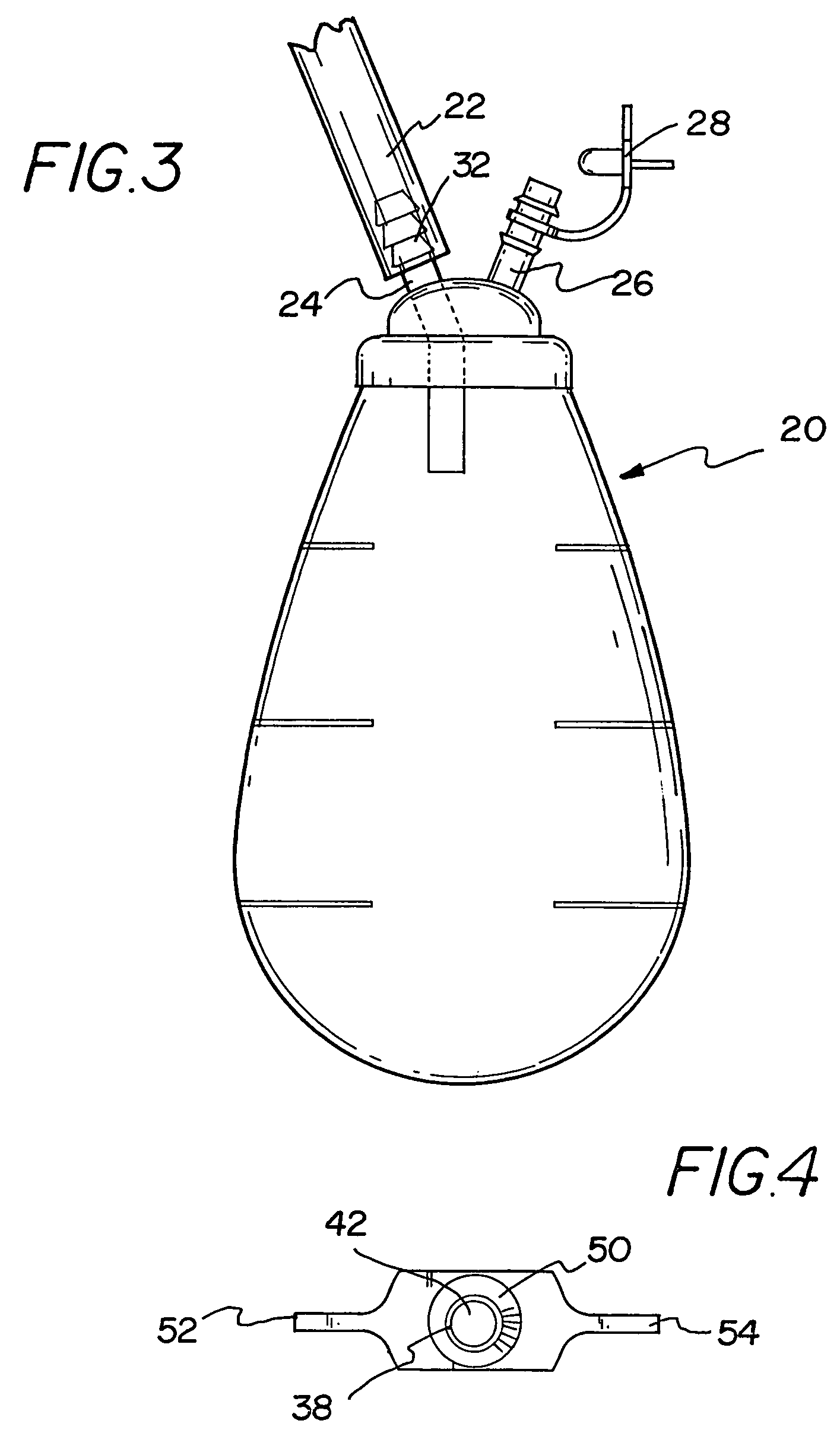Subdural evacuating port system
a subdural and port system technology, applied in the field of new subdural evacuating port systems, can solve the problems of subdural hemorrhage in the “normal”, the subdural space between the brain and the dura gradually enlarges, and the subdural hemorrhage in the “normal” brain, and achieves the effects of promoting decompression, expansion, and recovery of the brain
- Summary
- Abstract
- Description
- Claims
- Application Information
AI Technical Summary
Benefits of technology
Problems solved by technology
Method used
Image
Examples
Embodiment Construction
[0033]With reference now to the drawings, and in particular to FIGS. 1 through 11 thereof, a new subdural evacuating port system embodying the principles and concepts of the present invention will be described.
[0034]As best illustrated in FIGS. 1 through 7, the system of the invention generally includes a subdural evacuating port device 10, and contemplates a kit for evacuating a collection of fluid from a subdural space of a patient that incorporates the subdural evacuating port device. The system also contemplates a method for utilizing the subdural evacuating port device and elements of the kit for removing fluid from the subdural space while facilitating the recovery of the patient's brain.
[0035]Elements useful in practicing the invention include the subdural evacuating port device 10, a drill device 12, a drill bit 14 for mounting on the drill device, a stop collar 16 for mounting on the drill bit, a retractor device 18, a negative pressure source 20, and a conduit 22.
[0036]The...
PUM
| Property | Measurement | Unit |
|---|---|---|
| diameter | aaaaa | aaaaa |
| length | aaaaa | aaaaa |
| length | aaaaa | aaaaa |
Abstract
Description
Claims
Application Information
 Login to View More
Login to View More - R&D
- Intellectual Property
- Life Sciences
- Materials
- Tech Scout
- Unparalleled Data Quality
- Higher Quality Content
- 60% Fewer Hallucinations
Browse by: Latest US Patents, China's latest patents, Technical Efficacy Thesaurus, Application Domain, Technology Topic, Popular Technical Reports.
© 2025 PatSnap. All rights reserved.Legal|Privacy policy|Modern Slavery Act Transparency Statement|Sitemap|About US| Contact US: help@patsnap.com



